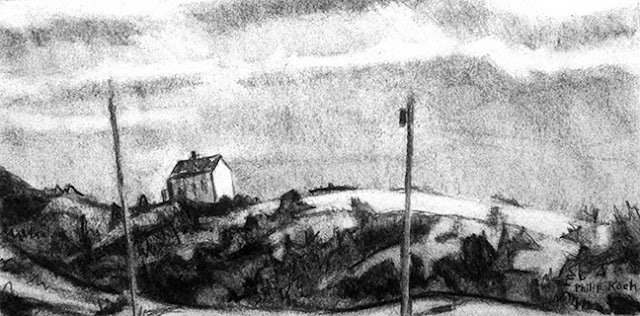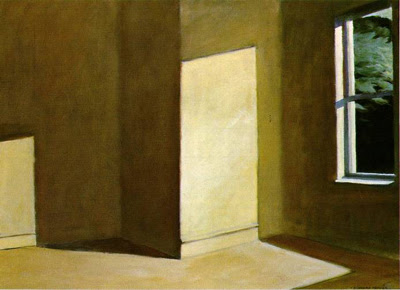More from Delaware Art Museum
The previous blog post talked about the new exhibition of art from the Brooklyn Museum, American Moderns 1910-1960, now hanging at the Delaware Art Museum that impressed me so much last weekend. Wanted to share a few more of my favorites from this show. The image on the cover of the exhibition catalogue is an oil by Georgia O'Keeffe (Am. 1887-1986), 2 Yellow Leaves. In person the handling of the paint is stunning.
Look at all the little moves O'Keeffe makes to inject some asymmetry into the painting, for example the outer periphery of the larger, bottom leaf. On the upper left it's got touches of green and seems unscathed by the coming of Fall. On the upper right the artist changes her palette more towards warm sienna browns. That second side also looks like a bug made a lunch for itself out of some of the leaf's outer edge.
There have been probably thousands of paintings of autumn leaves, but few have the visual surprise of this one. Notice how O'Keeffe understates most of the veins that run through the leaves. Some are crisply dark, but most of their edges soften and gradually seem to submerge below O'Keeffe's gentle sea of yellow.
Sometimes the broad paint handling and unusual points of view typical of modernist sensibilities could be used to depict a Jack and the Beanstalk story with figures dressed in antiquated garb.
The Delaware Art Museum in Wilmington is of course Wyeth country, so it's doubly appropriate that this early oil by N. C. Wyeth (Am. 1885-1945), Vision of New York, is included. It was used as an ad for a telephone company.
I find the rhythms of the sycamore's branches intoxicatingly elegant, with their sometimes straight, sometimes curving expanse across the canvas. Notice the way the branches move from lighter to darker and in and out of sharp contrast. They give just enough to play a huge supporting role in the climbers' drama without upstaging them. N.C. was good!
Last here is an oil by Jack Levine (Am. 1915-2010), Welcome Home, quite a large canvas tightly stuffed full of figures painted with almost flame-like flickering brushwork. The painting's surface is elegantly woven together with a network of boldly overlapping strokes. It's a bit like a mural by Thomas Hart Benton beginning to break apart into a thousand little pieces.
Heavy patterning and crowded space like this could easily overwhelm a viewer and cause them to turn away in confusion. Look at how Levine cuts through his ulta-cluttered space with the clean sharp edge of the linen covered dining table. It's like a visual handrailing in a storm.
I can't think of a painting that expresses joyless consumption better than Levine's biting oil. Curator Karen Sherry in her notes in the exhibition catalogue tells the background that led Levine to make this painting:
Shortly after returning from service in World War II, Levine painted this scathing satire of a welcome-home dinner for a major general at a posh restaurant. Disillusioned with the army, Levine viewed the institution as an undemocratic "caste system" that placed "the big slob who is vice-president of the Second National Bank and president of the Chamber of Commerce" in a position of authority.
American Moderns 1910 - 1960 continues at the Delaware Art Museum through Jan. 5, 2014.





